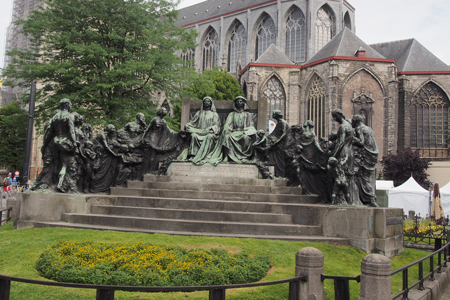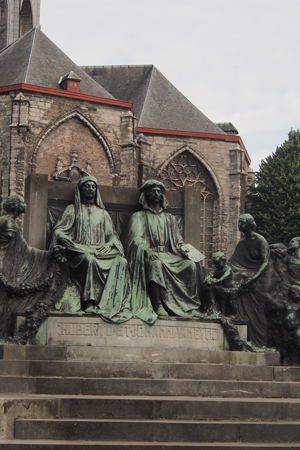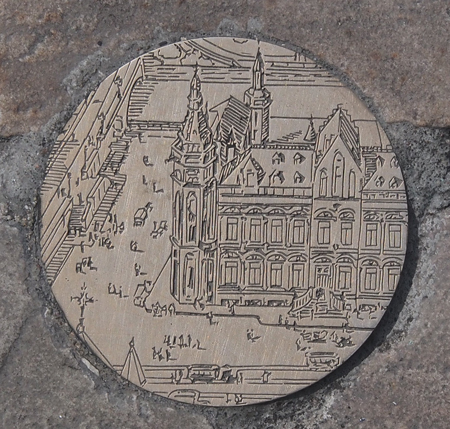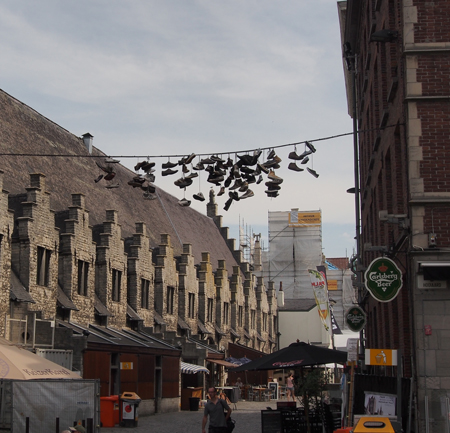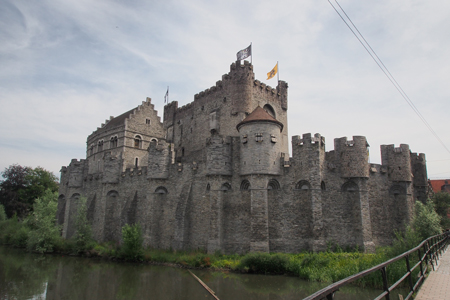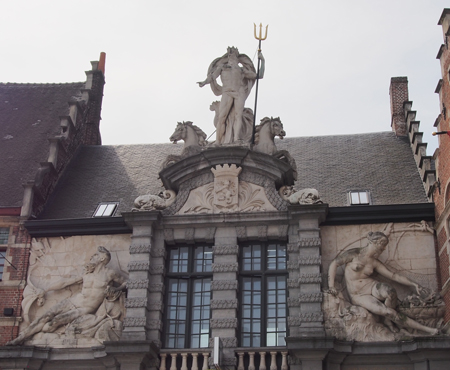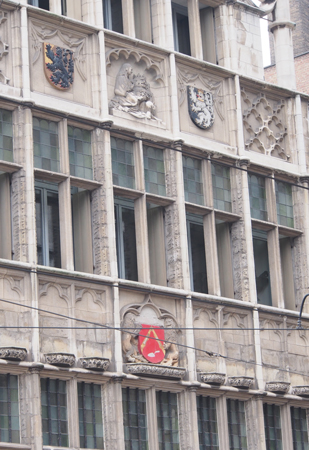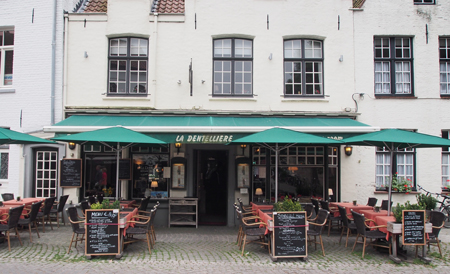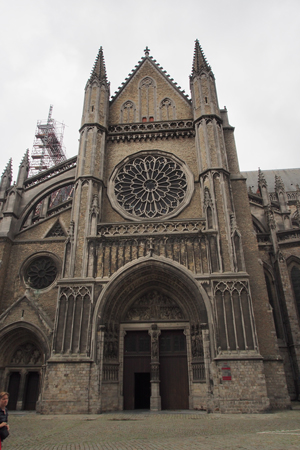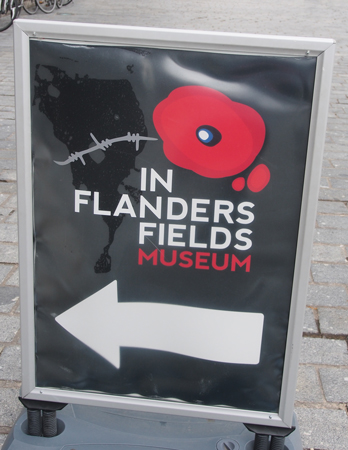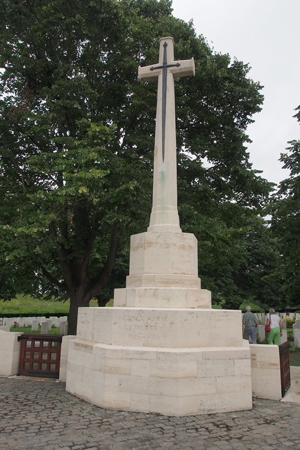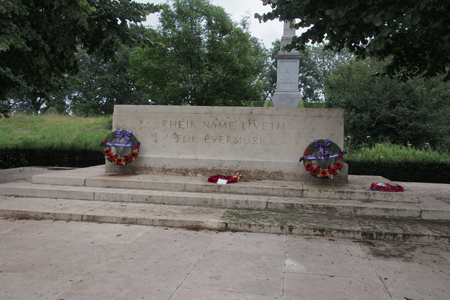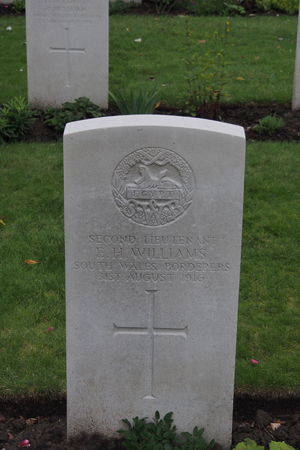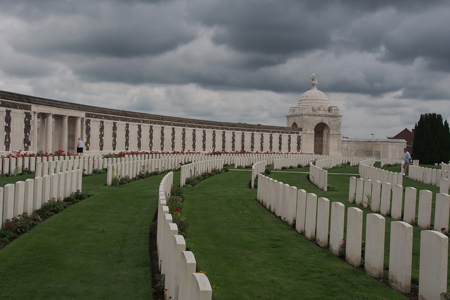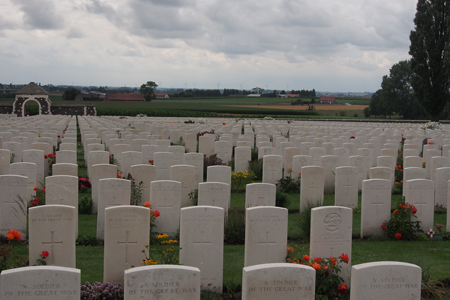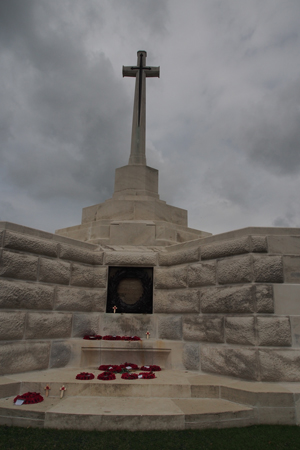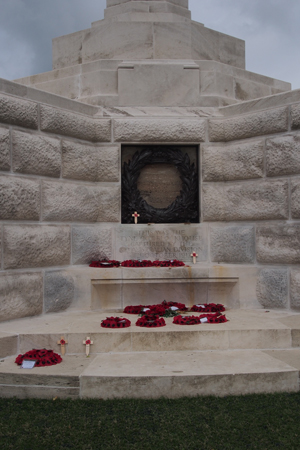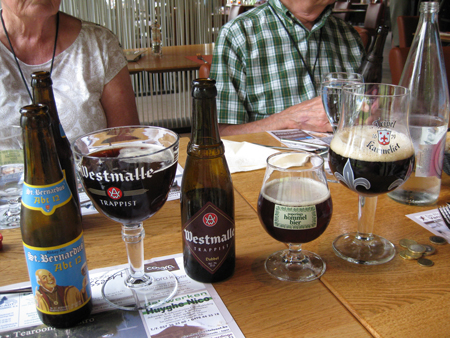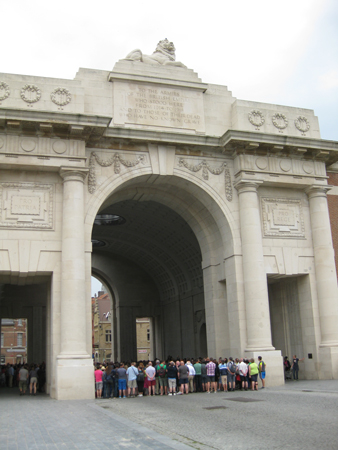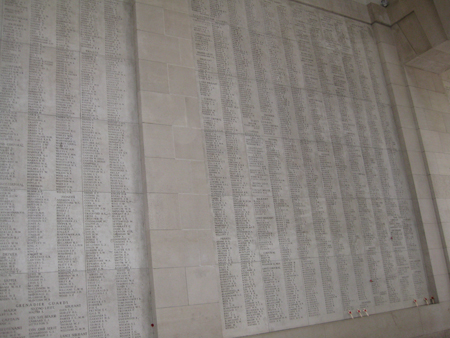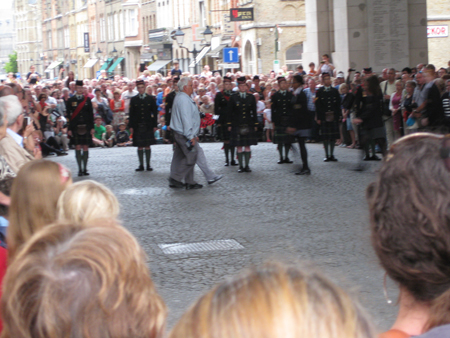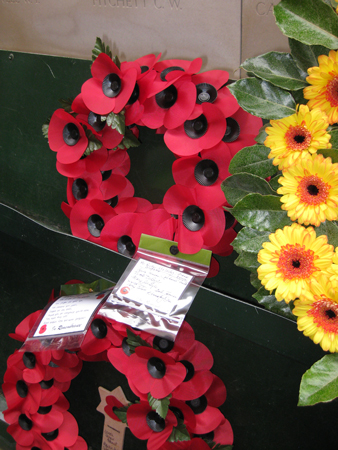Sat., 7/19/14 – Ghent and Bruges, Belgium
After breakfast our group of 20 who signed up for the post-trip tour boarded the bus that took us to Ghent and then on to Bruges. It was not a new motor coach like we usually get - it was a rattletrap bus! It had no springs or shock absorbers, no air-conditioning in the back where we were sitting, the driver had difficulty shifting the gears, and the roads were bumpy.
Van Eyck Monument
Van Eyck Brothers
Anyway, we got to Ghent to find that the big Ghent Festival was taking place this weekend so the city was crowded with canvas tents for beer lovers and sound stages in front of picturesque historic buildings and filling up the old squares. Our local guide, Wim, was not great. We had a long walk and he had us standing while he talked for a long time and it was 45 minutes before he got us to a bathroom, which is all some of us were interested in after the horrible bus ride. As Shakespeare wrote – Too pee or not to pee!
Old city Ghent today is a car-free. Bicycles and buses and trolleys, however, hinder carefree pedestrian traffic. If you turn in you car license plate the government gives you a lifetime free pass on public transportation.
As we walked on the tour we noticed round medallions in a path among the cobblestones. The medallions marked the old trade route from Ghent to Cologne, Germany.
Medallions marking the old trade route from Ghent to Cologne, Germany
Medallions marking the old trade route from Ghent to Cologne, Germany
The things you see everywhere there are kids!
Castle of Charles V
Nice sign
Statue of Poseidon at the Fisherman's Guild
There are three large towers in old town Ghent. One is part of St. Bavo Cathedral with the Van Eyck 1432 painting, The Adoration of the Mystic Lamb (known as the Ghent Altarpiece). It is the triptych recovered in the movie, Monuments Men (the book is better). Outside is a statue of the men who painted it. In some places they painted with a brush with only one hair and in some places the paint is 20 layers thick to give a 3-D effect. The triptych is the “most stolen and hidden” piece of art in the world. St. Bavo has several other large paintings, all kinds of side chapels, a main altar and a high altar, a crypt, elaborate decorations, etc. The Cathedral was under renovation but we got to see The Adoration of the Mystic Lamb. It is impressive (no photos, of course).
The second large tower is a 14th c. Belfry. It is a tower with the free city bell. It was moved there from the third tower, the one in St. Nicholas Church. St. Nicholas is the oldest and has a 1376 dragon on the top of its tower.
The Belfry
St. Bavo Cathedral
Guild Hall of the Masons
Guild Hall of the Masons
After more horrible bus riding we arrived in Bruges. There was an eight-car accident on the highway and we had to detour over more rough Belgian roads through several towns and were extremely happy to get off the bus at our Bruges Hotel, Casselbergh.
Rebecca took us on a walking tour on our way to dinner at a local restaurant. Tomorrow we get the “real” tour with a local guide, but today we saw that Bruges is an enchanting old city.
For dinner at La Dentilliere, an eetcafe (like a bistro) and restaurant, (25 Euros each) we had an appetizer of fried cheese croquettes or tomato and shrimp salad, Belgian beef stew in beer with onions, a bowl of fries served with their spicy mayonnaise, and vanilla ice cream. Best, however, was the glass of cold beer! It was a very hot and humid day and there was not a breath of air in the restaurant. No wonder most people eat and drink at the outdoor tables.
La Dentilliere
Dinner
Sun., 7/20/14 – Bruges and Flanders, Belgium
(This morning's tour of Bruges is on the next page with the rest of the pictures of this beautiful city.)
At 1:15 we began our optional tour to Flanders Fields. We had a luxury motor coach for seven of us plus Rebecca. It was a smooth ride, compensating for the ride from Antwerp to Bruges.
The bus parked in Ypres at St. Martins Church and we walked to the Flanders Fields Museum in the old Cloth Hall. Evidently after WWI destruction, Churchill wanted Ypres and the Flanders Fields left as it was – destroyed – as a reminder of the horrible sacrifices that took place there. Belgium wanted to restore it as it once was. Britain relented after two years and the town and the farms were rebuilt with the incorporation of 132 British, 2 French, and 4 German military cemeteries. In the interactive museum, the stories of some people who lived through the 1914 to 1916 years were retold. Military relics are displayed. The horrors of trench warfare are shown in photos and videos. There are even pictures of dead and mutilated soldiers lying in the fields. It was a sobering exhibit of the horrors of war. It would also take months or years to absorb all of the information presented.
St. Martin's Church
Flanders Fields Museum in the old Cloth Hall
After our museum visit, we got back on our bus and met our battlefield guide who was very good. We went first to the Essex Farm Cemetery. The British men who were killed on that battlefield are buried there. Many head stones are for unknown soldiers. There is a stone of remembrance with a Rudyard Kipling saying: “Their name liveth for evermore.” We walked down to a bunker that was used as a triage center. There were three categories of the wounded: those to be patched up and sent back to the lines; those who needed immediate evacuation to hospitals; and the “blitey” wounded who would be sent home. John McCrae, the Canadian doctor who wrote the poem In Flanders Fields worked in that bunker. He wrote the poem after his good buddy was killed at Essex Farm.
Memorial at Essex Farm Cemetery
Grave of an Unknown Soldier
Canadian Memorial at Essex Farm Cemetery
Grave of a Welshman
On our way to Tyne Cot Cemetery, our bus had to wait for a bike race to cross our path. We drove by the statue of the Brooding Soldier and through the town of Passchendaele. All of the area is flat farm fields with one slight ridge and some small cemeteries in the middle of a field or group of houses. Tyne Cot Cemetery is large. There are 11,954 burials of which 8,367 are unknown and the Memorial to the Missing lists the names of 33,783 British and 1,176 New Zealand soldiers whose remains have yet to be found.
Tyn Cot Cemetery
Tyn Cot Cemetery
Tyn Cot Cemetery Blockhouse
Tyn Cot Cemetery Blockhouse
Everyone tried a different beer!
Dinner was in Ypres at the Pacific Eiland Restaurant. We had another typical Belgian meal: the leg and thigh and back of a roasted chicken with Belgian frits and Mayo. It was good. The beer was terrific!
Then we went back to the Menin Gate to watch the Last Post ceremony. Every evening at 8 PM buglers play, silence is observed, and wreaths of poppies are placed at the names of war dead. Two of our men placed a wreath with Grand Circle and our names on it. It is an honorable remembrance that has been carried out every day since July 2, 1928. “They will not be forgotten.”
Menin Gate
Inscribed on the stone panels of the Hall of Memory are the names of the 54,896 Commonwealth soldiers who died at Ypres but who's bodies have never been identified or found
Last Post Ceremony
Grand Circle representatives walking up to place our wreath
Grand Circle's wreath
| Return to Top | Return to Itinerary | Return to Trips page to view other trips | Return to Dreamcatcher Home Page |
